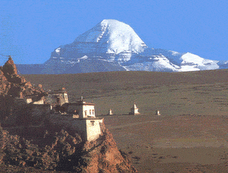Please donate by going to:
http://www.redcross.org/ and
http://arc3.convio.net/site/PageServerpagename=ntld_main&s_subsrc=RCO_ResponseStateSection
http://nepalitimes.com.np/blogs/kundadixit/2010/01/16/the-big-one/
The Big One
Saturday, January 16th, 2010
..................................................................................................................
An earthquake in the Kathmandu Valley will be our doomsday. Most of us try not to think about it too much. Those, whose job it is to, say it’s not a question of “if” but “when”.
The last major earthquake shook the nation on 16 January 1934, a jolt of magnitude 8.3 along the Nepal-Bihar fault. The next time the epicenter could be in Rasuwa or southern Lalitpur where there are other fault lines. It could be in western Nepal, where a 300-year old seismic gap–no big earthquake to release the tectonic strain building up in the crust– is waiting to rumble.
There is an escarpment ridge on the Siwalik range, East of Hetauda, that looks as if the entire mountain has tilted on its side. A geologist once told me the 1934 earthquake pushed this entire ridge up by 3 metres, lifting it up and northwards along a 4km long outcrop.
The hard igneous rock of the Indian continent that broke loose from Gondwananland is still pushing into and under the softer Eurasian continent. There is a tremendous amount of energy stored in the elasticity of the folding rocks. The subterranean strata snap periodically under the strain and that is when the mountains are pushed up in sudden jerky movements.
What has changed since the last earthquake is that Nepal has become the most densely populated mountain region on earth. Rapid urbanisation has tripled Kathmandu Valley’s population over the past 20 years. Cities like Pokhara have dramatically expanded in size.
Looking at the devastation in Haiti this week–the absence of government and relief, the social anarchy–it is not difficult to imagine Kathmandu’s fate. Like Haiti, we have no disaster preparedness plan. Nepal and Haiti are both the poorest countries in their regions. Both have unplanned and haphazard urban growth. Port-au-Prince’s advantage is that even if the airport is destroyed, relief can come from the sea.
Our only advantage is the knowledge that the next ‘Big One’ can happen any day. The Kathmandu Valley lies on a seismic zone that has historically had 8 magnitude quakes every 75 years. We can’t say we weren’t warned. There is no excuse not to be prepared. Here are some worst-case scenarios I ferreted out of some disaster experts. It scared the living daylights out of me:
Magnitude 8.3 on a winter evening with brisk westerly wind: Eighty percent of Kathmandu’s buildings collapse at a time when most people are at home preparing dinner. Gas cyclinders explode and kitchen fires spread. Fanned by the wind, the city is engulfed in a firestorm. There is no escape because Kathmandu has almost no open spaces left. Almost as many people are burnt alive as are crushed by falling buildings.
Severe earthquake at 1AM: Most people are sleeping at home. Maximum casualties result from crushed buildings. Those rushing to the streets are buried by falling cantilever balconies. There is no light or excavating equipments. Streets are blocked by debris. Most hospitals are damaged. The city wakes up to the horrific sight of complete devastation. When people get no food, medical care or help to rescue trapped relatives, there is looting and riots.
Magnitude 8 at 11AM on a monsoon morning after days of heavy rain: Kathmandu’s topsoil liquefies (like Mexico City in 1985), buildings collapse and the ruins “float” on ground that has turned into paste. The heaviest casualties are in collapsed government buildings, offices and schools. Airport runway is swallowed up by liquefaction and is unusable. Landslides wipe out all highways. International relief is dropped by parachute, but arrives days later.
The bad news is that even the best-case scenario points towards casualties in the tens of thousands and major damage to infrastructure. The government has drafted a disaster preparedness and relief plan, but the legislation is sitting on some desk in Singha Darbar.
With help from NGOs like National Society for Earthquake Technology and municipalities, some wards of Kathmandu, Patan and Bhaktapur have started to stock up on digging equipments, and drawn up emergency plans for evacuation, shelter, medical treatment and relief. But most wards have no plans at all. The reality is we are not prepared for the Big One, and it is going to be individuals and communities who have to look after their own.
Saturday
Terrible earthquake in Haiti, may they recover soon. Is Nepal next?
at
10:40 PM
![]()
Subscribe to:
Post Comments (Atom)


1 comment:
Thats true so everybody should wake up now.
Post a Comment